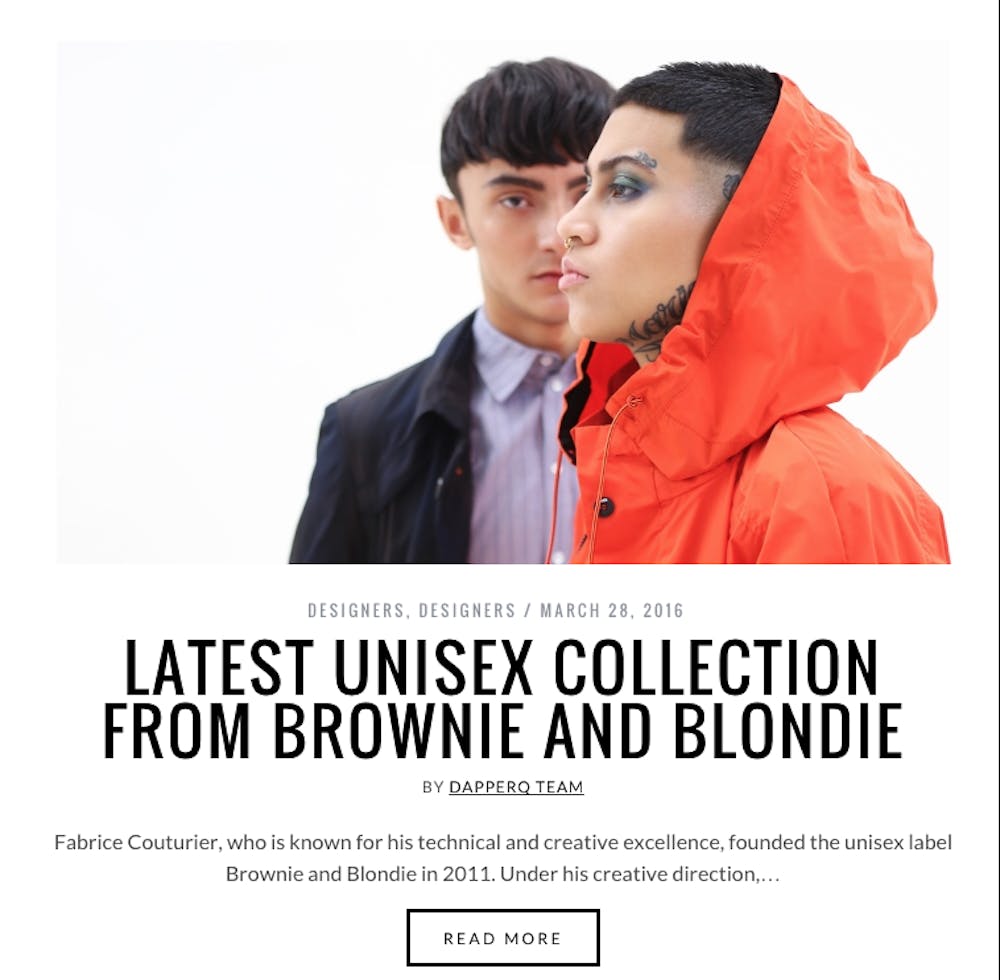Ashleigh Bingham, graduate assistant in the women’s and gender studies department, is also the writer and creator of a feminist fashion blog, "I Dream of Dapper," which features women expressing themselves in clothing traditionally considered “menswear.” Her work has been featured on Buzzfeed among other publications.
Darian Jones, a freshman Ball State student, would like to go into a clothing store and feel comfortable buying whatever clothes they want.
For some, this is easy, but for others, the clearly marked gender labels in the fashion industry can create conflicts and difficulties. As a student who identifies as non-binary, or neither masculine nor feminine, Jones struggles with this often.
“The rigidly gendered clothing in stores does make it hard for me to shop- especially because a lot of my clothing still needs to be bought by my parents, whom I’m financially dependent on and who are struggling to understand my identity," Jones said. "There’s a strong pressure to let your parents and society decide what you’ll wear for you, even if that choice makes you uncomfortable, and even when these people are genuinely trying to be understanding of you and don’t mean any harm."
Recently, the gender-neutral clothing Jones is in need of has been trending in the fashion world. From big-name brands like Gucci to massive corporations like Babies-R-Us, mainstream fashion seems to be embracing unisex clothing more than ever before.
Despite seeming like progress toward a more inclusive fashion market, however, many are questioning the quality of the lines and the motives behind them.
Gender-neutral clothing has risen and fallen in popularity throughout the course of Western fashion history, specifically in recent decades. From the 1966 “smoking jacket” for women created by Yves Saint Laurent to the gender-bending style of David Bowie, American culture is no stranger to androgynous fashion.
And yet, when trends do come back into style, it tends to say something about the culture we live in, explained Amy Harden, a professor in the department of fashion merchandising.
“The culture today has moved so much from formal to a more casual style, and this extends to being relaxed about gender binaries in fashion. Designers are all watching the same culture and interpreting it in their own way," Harden said.
Essentially, fashion tends to reflect the events happening in society rather than dictating the way that society behaves or acts. For example, the rise of very conventional gender clothing in the 1950s, like poodle skirts and suits, can be attributed to the desire to return to tradition after World War II.
In the same way, fashion today works to reflect the values of modern culture, and those values are increasingly moving toward a more inclusive and open society.
In this respect, an increase in gender-neutral clothing could help make the idea of being non-binary in gender a more accepted idea. Any push toward a more open society is crucial in light of statistics. According to a survey done by the Human Rights Campaign, 4 in 10 LGBT youth say the community in which they live is not accepting of LGBT people.
Jones recognizes the potential impact of these lines.
“I think it’s important for me to have these clothes so I can dress comfortably and fashionably, but also for the community to see these clothes in their stores,” Jones said.
Though these trends can create more acceptance, the rise in gender-neutral clothing also presents problems. Though mainstream lines can have a lot of influence, they also can be very expensive and inaccessible to average citizens, particularly those who need ungendered clothing items the most.
“If you look at the price tags on the clothes being marketed, you’ll notice they are incredibly high and not the answer to the lack of resources available for lower class and working class individuals,” said Ashleigh Bingham, a graduate assistant in the women’s and gender studies department.
If the clothing being made available without gender labels is too expensive for many to buy, the social impact of the clothing will be drastically lowered.
Due to the high prices and the nature of the fashion industry, the motives behind the recent trend in gender-neutral clothing lines can also raise questions for consumers.
Jones has noticed while they feel mainstream gender-neutral clothing is a step in the right direction, it is often misunderstood by companies.
“They aren’t aimed at us,” Jones said of the fashion lines. “They’re being aimed at wealthy, thin people who want to look like models and superstars. Gender-neutral clothing has become a kind of celebrity fad.”
Despite the mixed motives and outcomes of mainstream companies adopting gender-neutral styles, one thing is clear: style is an essential part of expression as individuals, and having the resources and the societal support to do that is crucial to thriving, Bingham points out.
“When we look in a mirror and see a genuine representation of ourselves, there is such power present. You walk taller, you speak with more confidence, you are more yourself than you have ever been. It can be a life-changing experience that far too many people are restricted from due to heteronormative values in today’s society,” Bingham said.
Jones echoed this thought, and explained that having gender-neutral clothing that is both available and affordable is imperative for continued progress and acceptance.
While the new lines may not be perfect, they do give hope for the future.
“Regardless of whether they mean to or not, beginning to sell gender-neutral clothing is at least a step in the right direction," Jones said. "It is a small, tenuous, sometimes radically misinformed step, but it is a step nonetheless.”
Whether or not the mainstream trend will last, it is safe to say society will continue to find ways to express their own individuality through fashion, no matter what labels or choices companies dole out.





